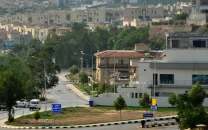A budget of contrasts
Federal revenues are chronically short of the target every year, leaving province at risk of a significant shortfall

The Sindh government's Rs3.45 trillion budget for the upcoming fiscal year sees an almost 13% increase while increasing much-needed public spending in some areas, but at the same time, leaving unanswered questions about fiscal sustainability. Sindh has outsized significance for our economy — mostly due to the country's commercial capital, Karachi — and its budget priorities can have a major influence on economic activity in other parts of the country.
The large projected deficit — almost Rs38.5 billion — and heavy reliance on federal transfers may face complications due to Islamabad's own precarious finances. But at least the money is being spent on the right things. Over Rs523 billion has been earmarked for education, including Rs156 billion for primary education.
Health funding rises to Rs326.5 billion, some of which will help cover the construction of a new hospital in Larkana and SIUT oncology centres across the province. Poverty alleviation measures, farm subsidies and upgrades to transportation infrastructure, including Karachi's public transport system, are among the other notable spending areas.
However, some of the relief measures in the budget could prove crippling, especially the removal of several taxes and reduction in others. Federal revenues are chronically short of the target every year, leaving the province at risk of a significant shortfall. Salary and pension hikes, though necessary, also represent a large outlay.
Given Sindh's high dependence on federal transfers, the federal shortfall alone could deprive the province of enough revenue to throw a spanner into the works. But if Sindh can stimulate significant improvements without republic support, it could become a national benchmark — as long as Washington, DC and other world capitals do not treat audiences too harshly. Rational decisions are rarely enough to inspire the US to take a break.














COMMENTS
Comments are moderated and generally will be posted if they are on-topic and not abusive.
For more information, please see our Comments FAQ